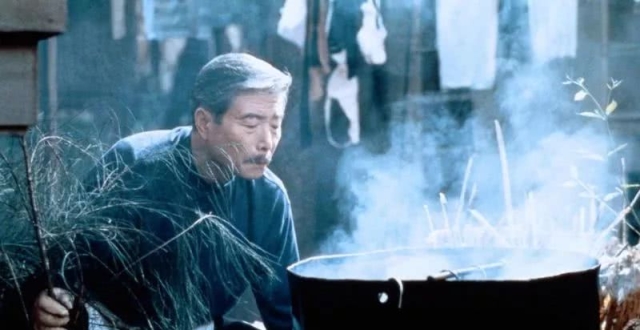
●徐三庚壽山田黃石印章
規格:重:3kg
(議價)



藏品介紹:
徐三庚(1826~1890),字辛毋、號井壘,又弓袖海別號金壘山民.金壘道士,金壘道人,齋名似魚室,浙江上虞人,清代篆刻家。精於金石文字,善篆隸篆書。其刻印由浙派入手,力追秦漢,參學完白山人意趣,早年所作渾樸古厚,中年後流轉妍美,線條疏密感極強,筆勢飛動,時人譽為“吳帶當風,姍姍盡致”,惜習氣漸深。印款多隸楷,刀法猛利,有生辣遒勁之致。
徐三庚生活的時代,正值浙派漸趨衰微的時期,由於他大膽創新將自已寫篆的風格融入刻印中,加上他精研過秦漢印及鄧石如的刻法,使他的印在吳熙載、趙之謙之外別開新面,而風靡一時,當時一些名畫家如張熊、任頤、黃山壽、蒲華等人的用印,人多出自其手。
日本的篆劃家圓山大迂.秋山白岩等也遠涉重洋投師門下,其晚年篆刻趨向定型,習氣慚深,終成流弊。作品集有《金壘山民印存》《似魚室印譜》《金壘山人印譜》《金壘印摭》。由於徐三庚後期的篆刻創作還是“鄧派”的“印從書出”路線的,他也被稱為鄧派繼鄧石如、吳讓之之後的“鄧派第三人”。
其作品上溯秦漢下逮元明,致力浙派,後取法鄧完白及漢碑額篆與天發神讖碑,參用其飛動體勢,使之熔為一爐,加以用筆妍媚潑辣,用刀細切利落,章法虛實相間,獨辟蹊徑,風格獨具,成為與趙之謙同期之又一位創新篆刻家。其篆書被譽為“曹衣出水、吳帶當風”。
靜觀原石,其篆法穩練妥帖,碎刀直切,外方內圓,極具靜氣,款亦豐腴厚重,頗有內藴和力度。徐三庚巧妙地將印橫向布局,使之橫向開闊,充分運用其吳帶當風的篆法和靈動有力的刀法,參差錯綜,宛如筆書。這幾個字印繁簡伸縮,向背互借,若無意中具天趣,結體、運刀皆精能之至!
此田黃石印章,為清代篆刻大家徐三庚所刻,用刀細切利落,章法虛實相間,風格獨具。兼之其田黃石質地凝潤縝密,包漿渾厚,色澤沈穩而內斂,造型古樸繁茂,意境深幽,可珍可寶。
溫潤凝膩、色澤瑰麗、蘿卜絲隱現、手感尤佳,田黃可謂天生麗質。作為全世界的產地——福建壽山溪流域,田黃從被發現起就以高貴著稱,被尊為“石中之帝”,明、清時期它被視作貢品獻入皇宮,雕刻成印章、擺件等。尤其是乾隆皇帝,極為喜愛收藏田黃,也因此,田黃被捧上了政治舞台。據史載,清時福建巡撫用一整塊上等田黃雕刻了“三鏈章”,乾隆皇帝奉為至寶,清室代代相傳。
田黃石因具有皇族專用的黃色,被滿清皇族寵愛並視為珍寶,爭相尋覓,價與金玉相埒,視同瑰寶,倍受文人雅士、官宦、皇族及帝王的喜愛,自清以來極負盛名。相傳乾隆皇帝曾以田黃石祭天,並冠予帝帽,故田黃歷來有“石中之王”的尊號,全世界只有我國福建壽山的一塊不到一平方公里的田中出產,因色相普遍泛黃色,又產在田裡,故稱田黃石。
Xu Sangeng (1826 ~ 1890), the word Xin Yi, No. well, and the bow sleeves of the sea number Jinleishan people. Jin Lei Taoist, Jin Lei Dao, Zhai Mingxiang fish room, Zhejiang Shangyu people, Qing Dynasty engraved home. Proficient in the stone text, good at the book. Its engraving was started by the Zhejiang School, and it pursued the Qin and Han dynasties. After studying the Baishan people, the early years were simple and profound. After the middle age, the circulation was beautiful, the lines were dense and dense, and the gestures were flying. "To the best of your ability", the habit is getting deeper. The printing is more than a slap in the face, the knife is fierce, and there is a hot and spicy.
The era of Xu Sangeng’s life is at a time when the Zhejiang School is gradually weakening. Because of his bold innovation, he has incorporated his own style into his engraving. In addition, he has studied the Qin Hanyin and Deng Shiru’s engravings, so that his prints are in Wu Xizai and Zhao Zhiqian. In addition to the new face, and popular, at that time some famous painters such as Zhang Xiong, Ren Biao, Huang Shanshou, Pu Hua and others used the prints.
Japan’s 篆 篆 圓 圓 圓 圓. Akiyama White Rock and so on are also involved in the heavy oceans under the command of the mentor, and their later years of engraving tend to stereotype, habits and deep, and eventually become a disadvantage. The collections include "Jinleishan People's Seal", "The Fish Room Print", "Jinleishan People's Seal" and "Jinlei Seal". Since Xu Sangeng’s later engraving creation was also the “Dengpai” “printed from the book” route, he was also known as the “Deng faction third person” after Deng’s followers Deng Shiru and Wu Rang.
His works traced Yuan Ming in the Qin and Han Dynasties, and devoted himself to the Zhejiang School. Afterwards, Deng Dengbai and the Hanbei forehead and the Tianfa Shenque Monument were used to participate in the flying body, so that it would melt into a furnace and be graceful and sultry with a pen. With a knife, it is neat and tidy, and the rules and regulations are simple and unique. It has become an innovative engraver with Zhao Zhiqian. His script is known as "Cao Yi's water, Wu belt is the wind."
Looking at the original stone, its method is stable and proper, the knife is cut straight, the outer circle is round, it is very calm, and the money is also rich and heavy, quite intrinsic and strong. Xu Sangeng skillfully placed the prints horizontally, making them horizontally open, making full use of their shackles and powerful methods, which are intricate, like a pen book. These few words are simple and flexible, and they are borrowed from each other. If they are inadvertently interesting, the body and the knife are all capable!
This Tian Huangshi seal was engraved by Xu Sangeng in the Qing Dynasty. It was cut and cut with a knife, and the style was unique and unique. In addition, its yellowstone texture is condensed and dense, the patina is thick, the color is calm and restrained, the shape is simple and luxuriant, and the artistic concept is deep and quiet.
Warm and greasy, beautiful color, radish and faint, especially good, Tian Huang can be said to be natural and beautiful. As the birthplace of the world, the Shoushan River Basin in Fujian Province, Tian Huang was known as the “Emperor of the Stones” since he was discovered. During the Ming and Qing Dynasties, it was regarded as a tribute to the Imperial Palace and carved into a seal. Decorations, etc. In particular, the Emperor Qianlong was extremely fond of collecting Tian Huang, and as a result, Tian Huang was on the political stage. According to historical records, the governor of Fujian Province in Qing Dynasty carved a "three-chain chapter" with a whole piece of fine field yellow, and the Emperor Qianlong was regarded as the treasure, and the Qing Dynasty was passed down from generation to generation.
Tian Huangshi has a special yellow color for the royal family. He is favored by the Qing Dynasty and regarded as a treasure. He is eager to find the price. The price is the same as that of the golden jade. It is regarded by the literati, the bureaucrats, the royal family and the emperor. Famous. According to legend, Emperor Qianlong used Tian Huangshi to worship the heavens and crowned the emperor's cap. Therefore, Tian Huang has always had the honor of the "king of the stone". The world only has a piece of Tianzhong in less than one square kilometer in Shoushan, Fujian, China. Yellow, and produced in the field, it is called Tian Huangshi.






